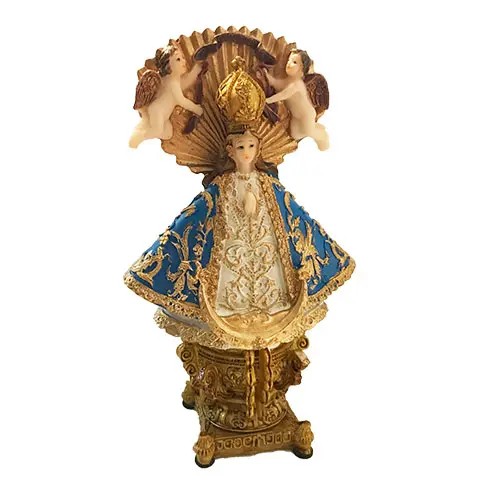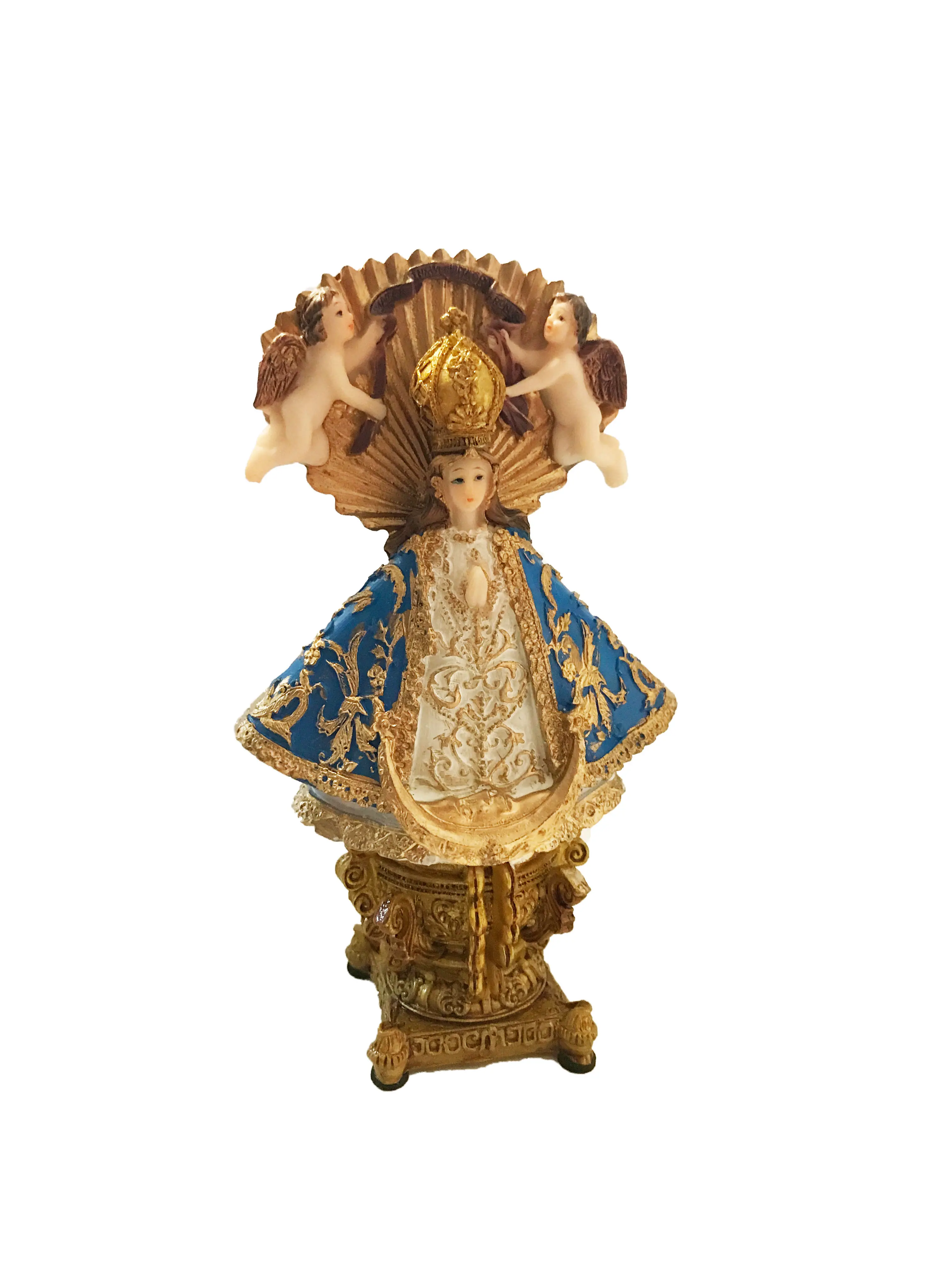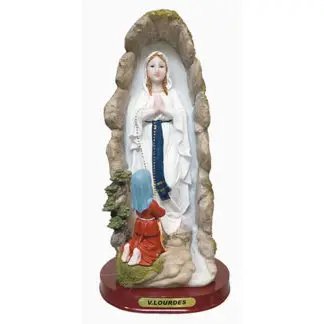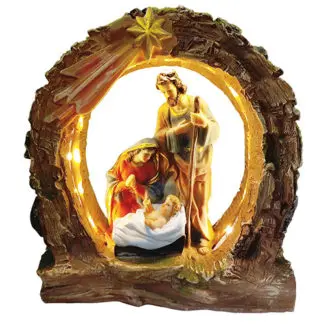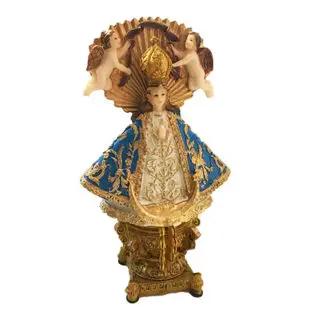Description
The sanctuary’s history begins in 1543 when Father Miguel de Bologna, a Spanish priest, brought a statue of the Virgin of the Immaculate Conception to the village. The town was then called San Juan Mezquititlan Baptist but its name was changed to San Juan de Los Lagos in 1623. According to local histories, and some eyewitness accounts, a certain aerial acrobat was traveling along the Camino Real, “the Royal Highway,” from San Luis Potosí to Guadalajara, performing in the towns along the way. His act included his wife and two daughters. His stunts included swinging from one high point to another by means of ropes, in somewhat the same fashion as trapeze artists of today. To add excitement and an element of danger, the artists had to fly over swords and knives that were stuck in the ground with their points positioned upward.
While performing in the village, the younger daughter, a child of six or seven, slipped, fell upon the knives and was mortally wounded. After preparing the body and wrapping it in burial cloths, the grieving parents brought the child’s body to the chapel of Our Lady of San Juan for burial.
Meeting them at the door of the chapel was the 78-year-old Ana Lucia, the wife of Pedro Antes (the caretaker and custodian of the beloved statue). Feeling pity for the grieving family, she exhorted them to have confidence in The Virgin, who could restore the child to them. Taking the statue from its altar in the sacristy where it had been consigned because of its poor condition, Ana Lucia laid it near the child’s dead body. In a few moments, they detected a slight movement under the shroud. The parents quickly unwrapped the cloth to discover the child well and unharmed. This first miracle of Our Lady of San Juan de Los Lagos became known in neighboring villages and towns. Numerous other miracles and favors followed, until now Our Lady is venerated by pilgrims from throughout Mexico and the United States.
Following this miracle, the statue began to be venerated by an increasing number of pilgrims including Indians, Spanish and mestizos. During this period the statue acquired its own local identity as Our Lady of San Juan de los Lagos. Between the early 17th century and the middle of the 19th century a pilgrimage fair was held each year on November 30 to celebrate the original installation of the statue in the shrine.

